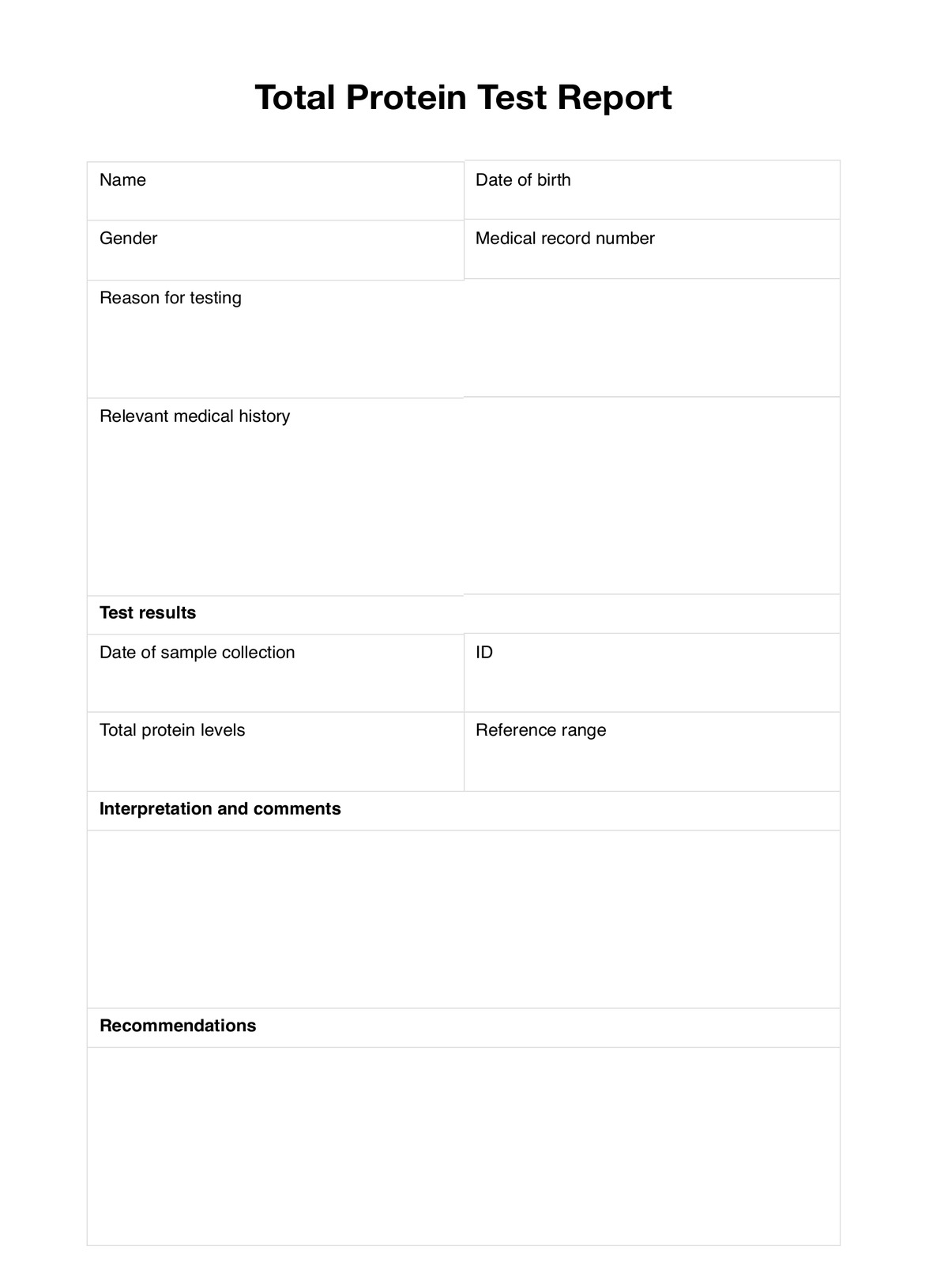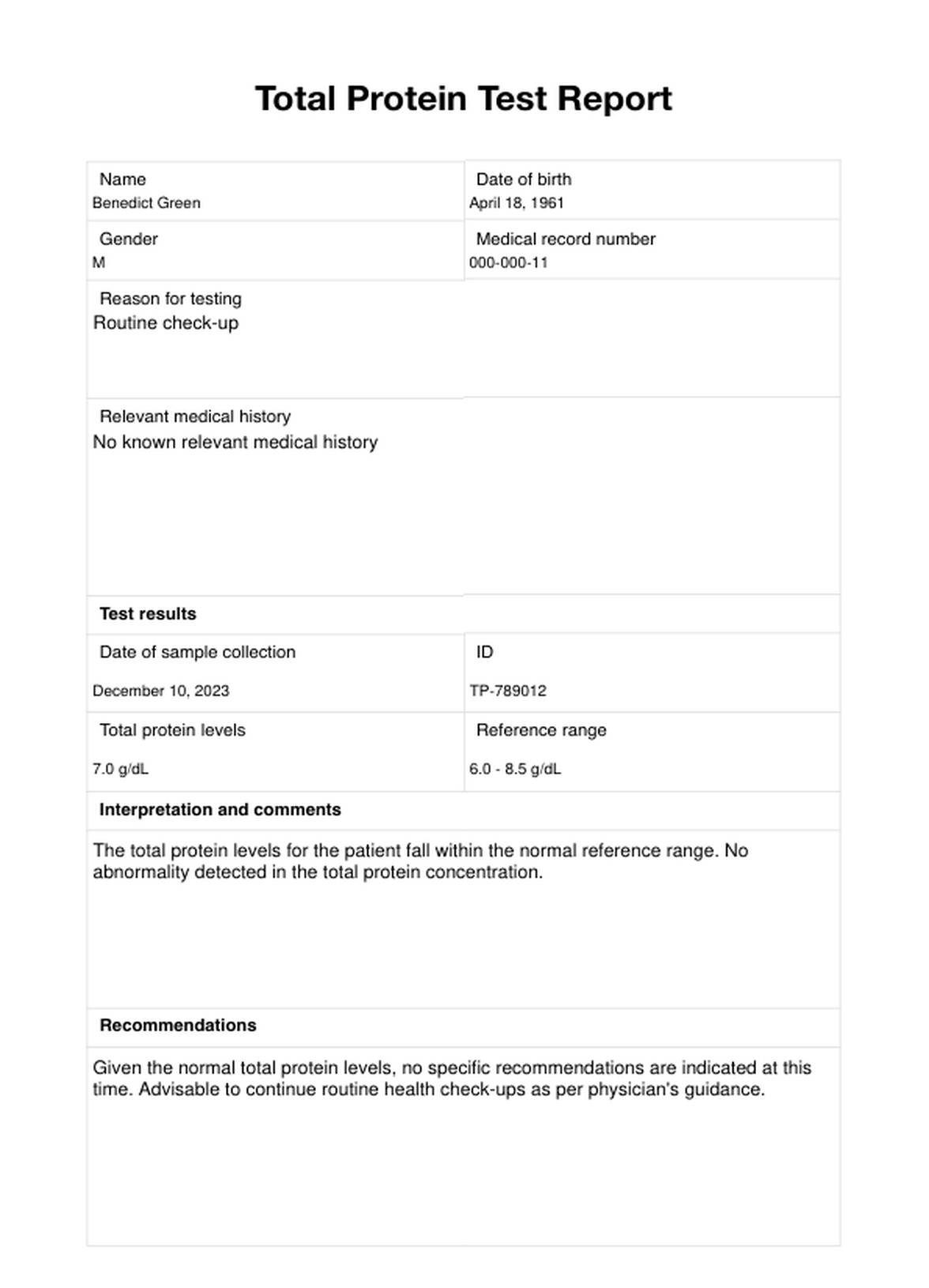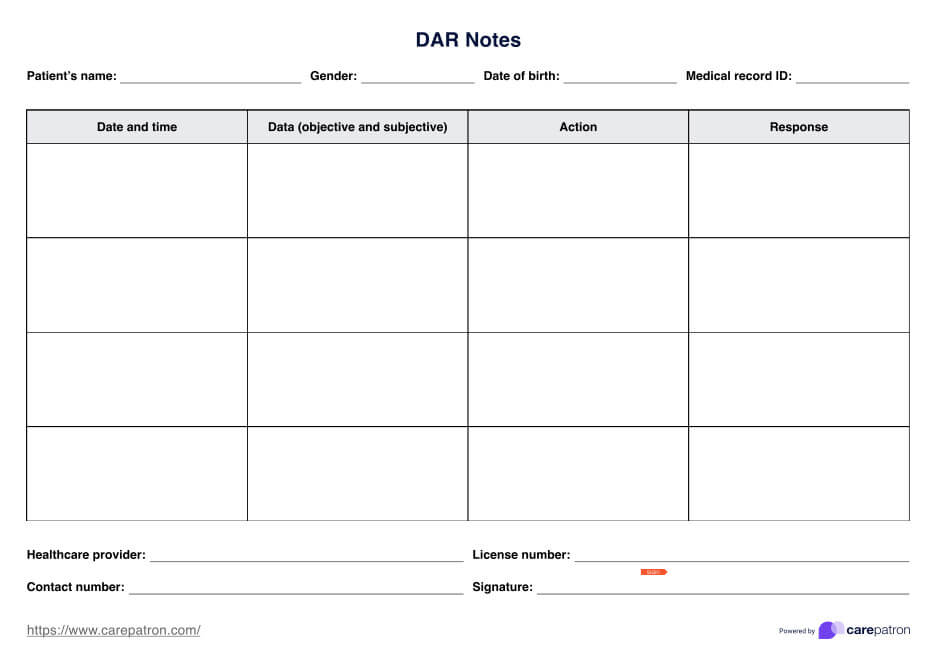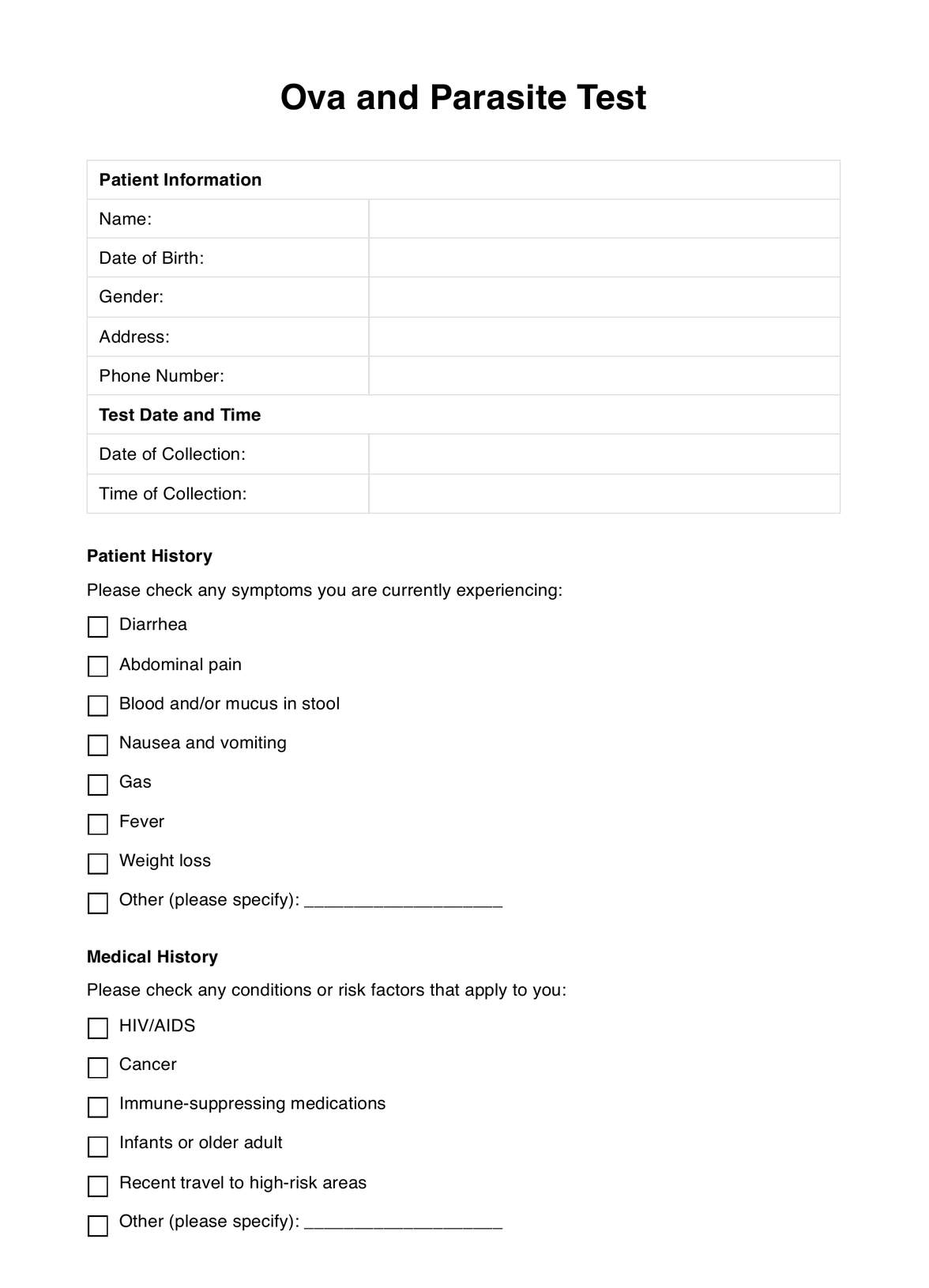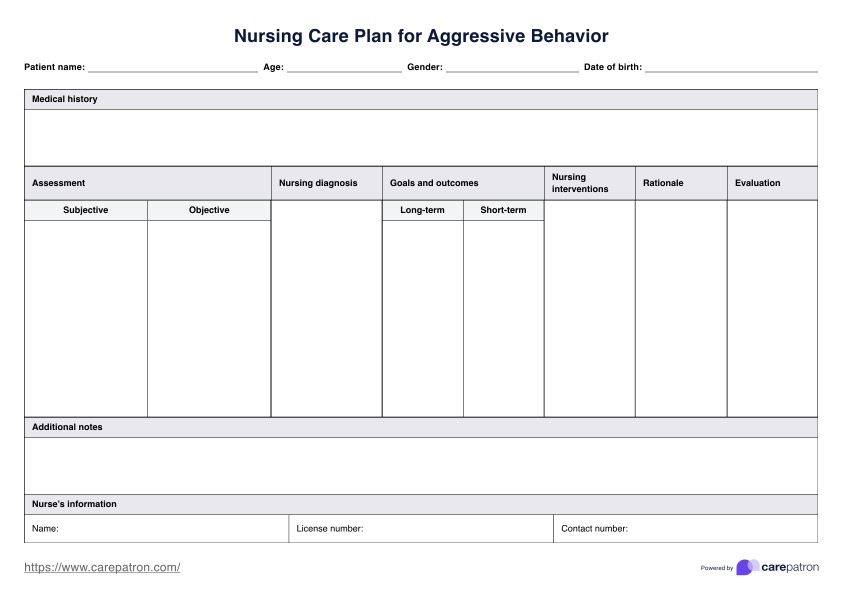Total Protein Test
Explore how a Total Protein Test works. Get a free template for your report and create easy documentation in minutes.


What is a Total Protein Test?
A Total Protein Test, also known as a total serum protein test or total protein measurement, is a blood test that measures the amount of protein in your blood. Proteins are essential molecules that play many vital roles in the body, including building and repairing tissues, transporting nutrients, and regulating various body functions.
The test is often performed as part of a Comprehensive Metabolic Panel (CMP) or a routine checkup to evaluate overall health and detect potential health issues. Moreover, it can also be used to monitor and diagnose kidney or liver disease and certain blood disorders.
A Total Protein Test is primarily done to check for abnormal protein levels in the blood. Abnormal protein levels may be an indicator of various health conditions, including kidney or liver disease, immune system disorders, and certain types of cancer.
Total Protein Test Template
Total Protein Test Example
What does a Total Protein Test measure?
This routine checkup and medical examination assess the levels of two primary types of protein in the blood: albumin and globulin. These essential proteins are synthesized in the liver and play distinct roles in maintaining optimal bodily functions:
- Albumunin: This consists of approximately 60% of the total protein in the blood (NCBI, n.d.) and serves multiple purposes. It helps balance fluid distribution between tissues and blood vessels and carries various substances, including hormones, vitamins, and drugs.
- Globulin: This can be further categorized into alpha, beta, and gamma globulin subtypes. Each subtype plays a vital role in different aspects of bodily function (MedlinePlus, n.d.). Alpha and beta globulins contribute significantly to immune function, safeguarding the body against harmful pathogens and promoting overall health. Gamma globulins, on the other hand, are instrumental in blood clotting and the transportation of various substances necessary for bodily processes.
The Total Protein Test provides valuable insights into an individual's overall health by evaluating the levels of albumin and globulin in the blood. It can help you identify any potential imbalances or abnormalities.
Albumin to globulin ratio
The Total Protein Test also provides an important measure known as the albumin/globulin (A/G) ratio. This ratio helps evaluate the balance between these two types of proteins and can indicate certain health conditions (University of Rochester Medical Center, 2023; Healthline, 2022).
The A/G ratio is calculated by dividing the albumin levels and globulin levels. In a healthy individual, this ratio should be around 1.2 to 2.0. A lower A/G ratio may indicate liver disease or malnutrition, while a higher ratio may suggest chronic inflammation or infection.
Moreover, an abnormal A/G ratio may also indicate the presence of certain diseases, such as blood cancers and multiple myeloma, which affect plasma cells in the bone marrow. In this case, the Total Protein Test can serve as an initial screening tool for further investigation.
Understanding protein levels
Total protein levels can help assess patients’ nutritional status. They can also help evaluate a patient's risk for the following conditions:
Kidney disease
Abnormal or high protein levels may be an indicator of kidney disease. In this case, the kidneys are not functioning properly and cannot efficiently filter out excess protein, leading to high levels in the blood.
Liver disease
Liver disease can also cause abnormal levels, as the liver produces certain proteins, including albumin and globulin. If the liver is damaged or not functioning properly, it may result in low levels of these proteins in the blood.
Immune system disorders
It can also help diagnose immune system disorders, as globulins are crucial in the body's defense against infections and diseases. Abnormal protein levels may indicate an overactive or underactive immune system.
Multiple myeloma
This type of blood cancer can also be detected through this exam. In this disease, abnormal plasma cells multiply rapidly, increasing the production of a specific protein (monoclonal protein) in the blood and urine. This leads to high total protein levels, specifically in the globulin category of high blood protein.
Preparing for the test
Here are some general guidelines that your patients should follow before taking a Total Protein Test:
- Ensure to fast for 8-12 hours before the test, as food can affect the accuracy of the total protein test results.
- Drink plenty of water as it helps easily collect the blood sample.
- Inform the doctor of any medications, vitamins, or supplements they take, as they may influence the test results.
- Some healthcare providers may have specific instructions based on your health history. Patients are advised to follow them accordingly.
- Avoid strenuous physical activity before the test, as it may temporarily increase protein levels.
- Arrive at the lab well-rested and calm, as stress can impact certain protein levels.
Interpreting the test results
The results of the test are typically available within a few days. This test provides valuable insights into a patient's health by measuring two main components:
Total serum protein level
This measurement indicates the overall amount of protein present in the blood. It includes two major types of proteins: albumin and globulin. As mentioned earlier, the total protein and albumin amount is crucial in maintaining osmotic pressure, transporting substances, and regulating pH balance. Globulin, on the other hand, encompasses various proteins involved in immune responses and clotting factors.
A/G ratio
The A/G ratio is derived by comparing the albumin and globulin levels in the blood sample. A low A/G ratio may suggest liver or kidney diseases, while a high ratio can indicate chronic inflammation or autoimmune disorders. Monitoring the A/G ratio can help identify potential health issues and devise appropriate treatment plans.
By analyzing these measurements, you can better understand your patient's overall protein status and detect any underlying health conditions requiring further evaluation or intervention.
Other uses of the Total Protein Test
Apart from measuring albumin and globulin levels, the test is an integral component of a CMP. This panel includes a range of measurements to assess overall health, such as electrolyte balance, kidney function, and liver function.
The test is particularly valuable in monitoring patients with known conditions that can affect protein levels, such as kidney disease, multiple myeloma, autoimmune disease, or liver disease.
In such cases, you may opt for additional tests, like protein electrophoresis, to delve deeper into the specific types of proteins present in the blood and gain a more detailed understanding of the patient's condition.
These additional tests provide crucial information for determining appropriate treatment plans and monitoring the progression of the underlying conditions.
Are there any risks to this test?
The protein total blood test involves a simple blood draw, which poses minimal risks in healthy individuals. However, as with any medical procedure, discomfort or bruising may occur at the blood draw site.
In rare cases, patients may experience excessive bleeding or infection at the puncture site. They must immediately inform their healthcare provider if they are taking any medications or have a history of bleeding disorders before undergoing any blood tests.
Moreover, while the test poses no risk of radiation exposure or allergic reactions, it is essential to follow proper sterile procedures to minimize the risk of infection. It is also to use a clean and properly calibrated needle at all times.
Next steps: further evaluation
You may refer individuals with high protein levels may be referred to a specialist for further evaluation and management. This may include dietary changes, medication, or lifestyle modifications.
They may also be advised to follow up with regular protein total blood tests to monitor their levels and track the effectiveness of treatment. Moreover, you can recommend a new diet plan and assess the patient's progress through protein total blood tests.
Individuals with low protein levels may also require further tests, such as another blood test, to determine the underlying cause and appropriate treatment. This may include a complete blood count, liver function tests, or kidney function tests. Additionally, lifestyle changes and dietary modifications may also be recommended to help increase protein levels.
In some cases, I suggest seeing a nutritionist or registered dietitian who can provide specialized advice on incorporating more protein into the individual's diet.
Furthermore, addressing any underlying health conditions that may be causing low or high protein levels is essential. This could include managing diabetes, liver disease, kidney disease, or other chronic conditions.
References
Healthline. (2022, June 9). Understanding Low or High A/G Ratio Results. https://www.healthline.com/health/a-g-ratio-high[5] WebMD. (2023, May 28). What Is a Total Serum Protein Test? https://www.webmd.com/a-to-z-guides/what-is-a-total-serum-protein-test
National Center for Biotechnology Information. (n.d.). Physiology, Albumin. In StatPearls [Internet]. https://www.ncbi.nlm.nih.gov/books/NBK459198/
University of Rochester Medical Center. (2023, December 3). Total Protein and A/G Ratio - Health Encyclopedia. https://www.urmc.rochester.edu/encyclopedia/content.aspx
Commonly asked questions
These levels in the blood can indicate a wide range of conditions, such as kidney or liver disease, inflammation, immune system abnormalities, and multiple myeloma.
The total serum protein test involves taking a blood sample from a vein in the arm and then analyzing it in a laboratory. The test measures albumin and globulin levels to determine the total serum protein level.
High blood protein, also known as hyperproteinemia, can be caused by various conditions such as dehydration, infection, chronic inflammation, and certain types of cancer.


